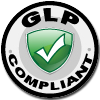Scientific Background: Specific 16S rRNA Regions
Specific 16S rRNA regions
Although a large body of phylogenetic data for microbial identification are gathered using sequencing, specific genetic targets such as hypervariable regions within the bacterial 16S rRNA genes may be amplified by PCR and subjected to DNA sequencing. Primers are manually designed for the conserved stretches of sequences flanking the V1, V3, or V6 hypervariable region based on multiple alignments of the 16S rRNA gene sequences of the bacteria of interest, which specifically amplify the hypervariable regions V1, V3, or V6 of the16S rRNA gene, respectively. The additional sequencing primers, which target different regions of the 16S rRNA gene, facilitate improved diagnostic accuracy and identify pathogens to the species level. Identification of microbes is possible through the sequencing of 16S rRNA regions due their highly conservative nature among different species of archaea and bacteria. The hypervariable region of the 16S rRNA sequence allows species and even genera distinction among microbes in a highly specific and conserved manner.
Scientific background
A number of bacterial isolates cannot be identified by their phenotypic characteristics or are difficult to identify by conventional biochemical methods; therefore, molecular methods are employed for their identification. Correct identification of microbes is crucial to the correct diagnosis of diseases, contamination and environmental studies. Genomic sequencing comparison has become widely considered the best genomic method for microbial identification today.
DNA sequencing offers an attractive strategy for the identification of such bacteria. Gene sequencing can be successfully employed for the identification of bacteria recovered from environmental or clinical specimens, including new bacterial species. Some of the genes are shared by a vast majority, if not all, of bacterial species. The ribosomal 16S rRNA and 23S rRNA genes, the 16S-23S rRNA gene internal transcribed sequences, housekeeping genes such as the rpoB gene encoding the β-subunit of RNA polymerase, the groEL gene encoding the heat-shock protein, the gyrB gene encoding the β-subunit of DNA gyrase, and the homologous recombination-encoding recA are among such genes. The presence of these genes in the majority of bacterial species offers the possibility of using these genes as universal or broad-spectrum targets for identifying various bacterial species.
Altogen Labs offers service to identify bacterial species based on the nucleic acid sequences of 16S rRNA. All bacterial species possess at least one copy of the 16S rRNA gene, which contains highly conserved as well as hypervariable nucleic acid sequences. Therefore, PCR-based methods that target the conserved nucleic acid sequences of 16S rRNA gene can be used to document the presence of bacteria in samples obtained from environmental or clinical sources. Using the same measure, targeting the hypervariable loci in the 16S rRNA gene enables identification of the specific species of bacteria. Sequence-based identification of bacteria relies on the postulate that two strains with matching sequences of house-keeping genes, such as the 16S rRNA gene, are likely to belong to the same species of bacteria.
Altogen Labs uses a high cutoff value of 16S rRNA gene sequence similarity for tentative delineation of new bacterial species. Additionally, unlike phenotypic assays, the results achieved by targeting the various nucleic acid sequences of 16S rRNA using PCR are not susceptible to interobserver variations. Furthermore, a number of electronic databases are available for identification of the bacterial species based on the nucleic acid sequences of 16S rRNA. This identification system based on 16S rRNA gene sequencing of the isolates may prove invaluable for quickly and reliably identifying novel pathogens or microorganisms with unusual phenotypic characteristics or antibiotic susceptibility patterns or both.
We can provide an immediate price quote (contact e-mail: info@altogenlabs.com). Please note that experimental details will help us provide an accurate quote and timeline estimate.

see also:
What is Microorganism Identification? Method Description | Scientific Background: Specific 16S rRNA Regions | Bacterial Analysis: 16S Sequencing | Microbial Identification Service: Applications
